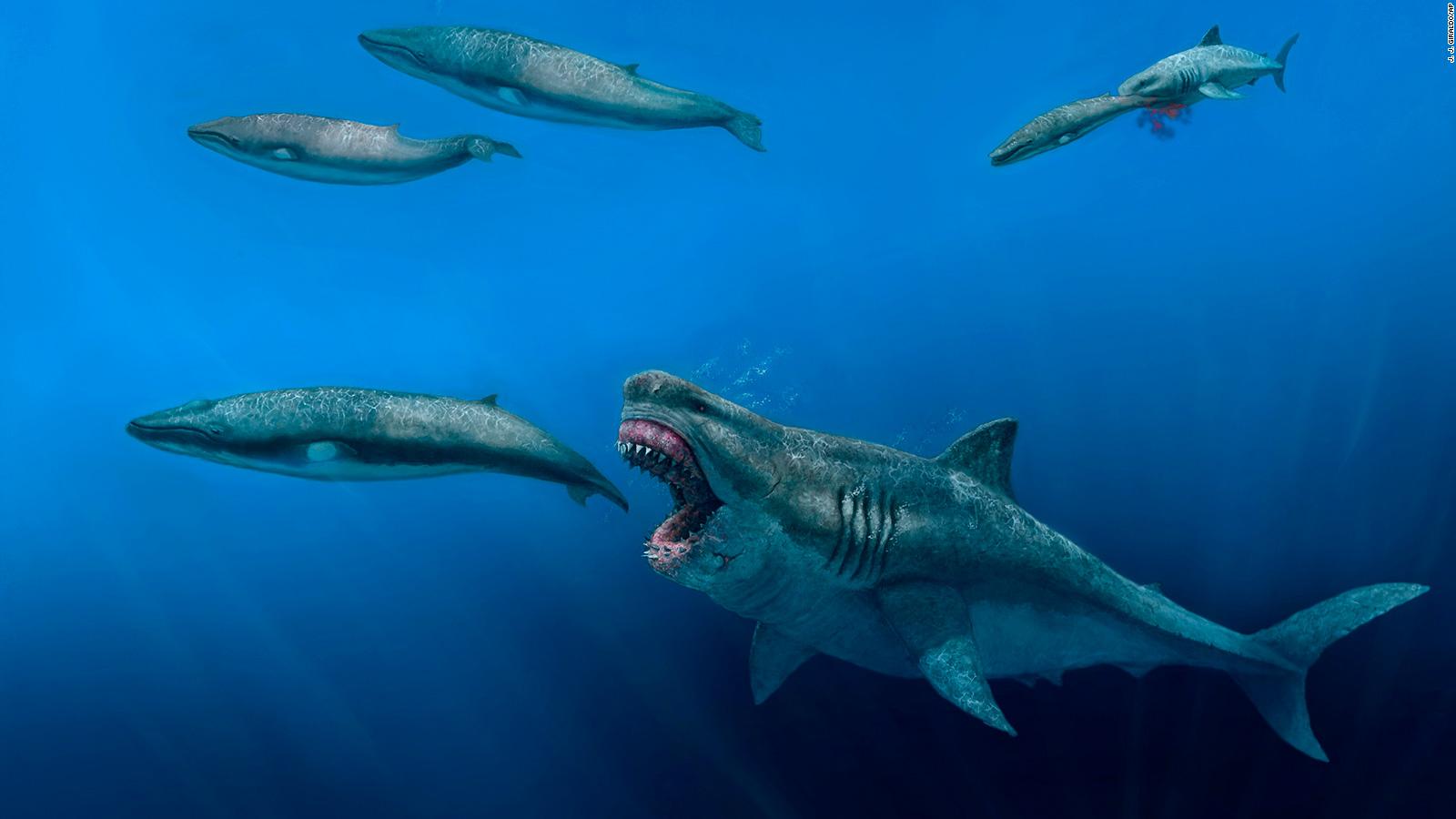Study reveals what contributed to the extinction of the megalodon 0:41
(CNN) --
Faster than any shark alive today and big enough to eat a killer whale in just five bites: A new study suggests the extinct shark known as the megalodon was an even more impressive apex predator than scientists realized. they believed before.
Otodus megalodon, the inspiration behind the 2018 movie "The Meg," lived more than 23 million years ago.
Fossils of the extinct giant are hard to find: while there are plenty of fossilized shark teeth, their bodies consist mostly of cartilage rather than bone, and they are rarely preserved.
A research team led by Jack Cooper, a paleobiologist at Swansea University, set out to use 3D modeling of a rare and exceptionally well-preserved megalodon spine to extrapolate information about the shark's movement and behavior.
His research was published in Science Advances on Wednesday.
"We estimate that an adult O. megalodon could move at absolute speeds faster than any living shark species and consume prey the size of modern predators," the researchers wrote.
This illustration shows a 15-meter Otodus megalodon shark preying on an 8-meter Balaenoptera whale in the Pliocene epoch, between 5.4 and 2.4 million years ago.
Most of what we know about megalodons comes from scientific inference: Scientists have estimated that extinct sharks could measure up to 19 meters through a comparison with great white sharks, considered their "best available ecological analog", since that both are at the top rung of the food chain, according to the article.
advertising
The researchers used a megalodon backbone from Belgium, a tooth from the United States and the chondrocranium, the cartilaginous equivalent of a skull, from a great white shark to build its 3D skeleton.
They then used a full-body scan of a great white shark to estimate how the meat would sit on the megalodon's skeleton.
The megalodon shark had a fin as tall as a human
With a full 3D rendering, they achieved estimates of the volume and body mass of the shark's entire body.
By comparing the figures to the size of modern sharks, they estimated the shark's swimming speed, stomach value, caloric needs and prey encounter rates.
The megalodon they modeled would have been almost 16 meters or 52 feet long.
It weighed about 61,560 kilograms, or 135,717 pounds, according to their estimates.
Megalodon shark babies were cannibals in the womb 0:35
They estimated that the megalodon would have been able to devour prey the size of killer whales, which can be up to 8 meters long and weigh more than 3 tons, in just five bites.
According to the researchers, prey the size of a modern humpback whale would have been too large for a megalodon to eat entirely.
Eating large prey may have given the megalodon a competitive advantage over other predators.
Gobbling up large numbers at once would also have allowed them to travel great distances without re-eating, much like modern great white sharks.
An adult megalodon would have needed to eat a staggering 98,175 calories per day, 20 times more than an adult great white shark.
They could have met their energy needs by eating about 31.9 kilograms of shark muscle, according to the researchers' estimates.
The megalodon was also faster than any living shark, with a theoretical average cruising speed of around 3.1 mph (4.9 km/h).
This speed would have allowed it to find more prey, helping it meet its enormous caloric demands.
Overall, the data extrapolated from the 3D model paints the picture of a "transoceanic apex predator," the researchers say.
Fortunately, today's killer whales don't have to worry about running into the huge shark.
The megalodon became extinct about 3.6 million years ago, according to the UK Natural History Museum, for reasons scientists are still trying to understand.








